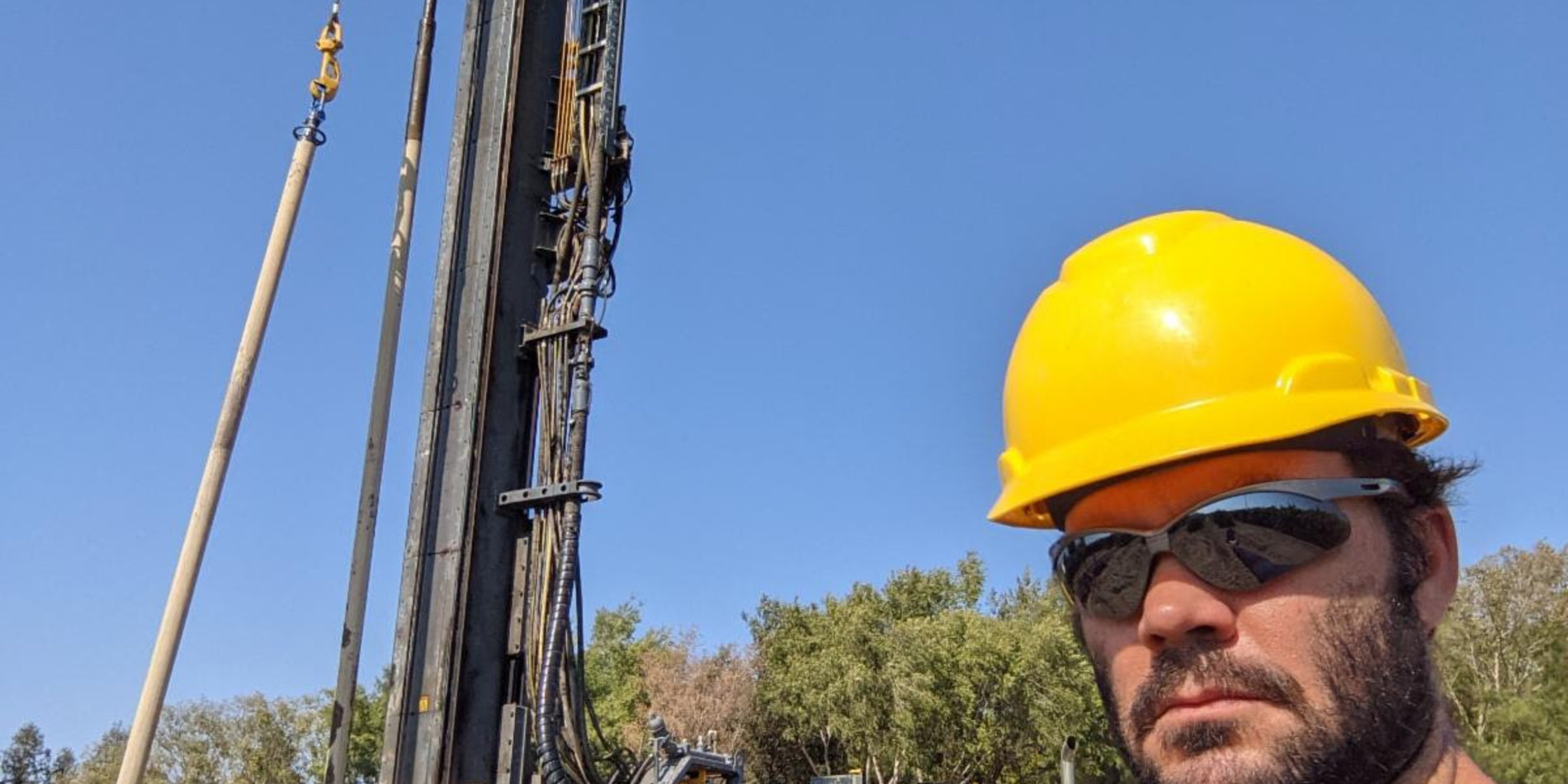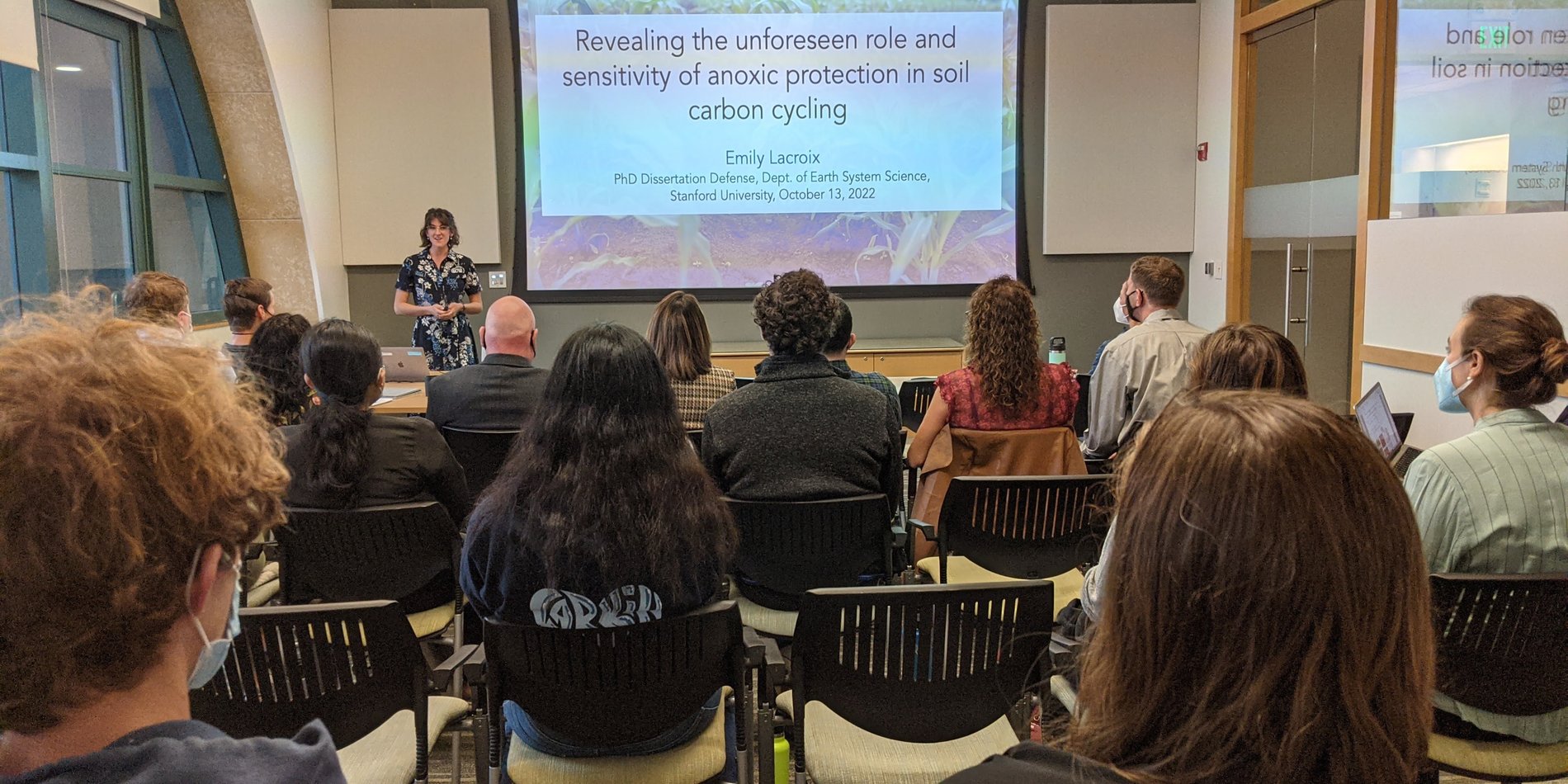Main content start
Congratulations to Alandra Marie Lopez!
Now Dr. Lopez
Stanford University
*** Ph.D. Thesis/ Oral Defense ***
From Fire to Water: How Natural and Anthropogenic Metal(loid)s Threaten Ecosystem and Human Health
Alandra Marie Lopez
Wednesday, May 11, 9:00 AM
Hartley Conference Room/Hybrid
Department of Earth System Science
Advisor: Dr. Scott Fendorf
Metal(loid)s are ubiquitous in the environment, either naturally occurring (geogenic) in soil and sediments or introduced by human activity (anthropogenic), and impose threats to human and ecosystem health globally. Exposure to toxic metal(loid)s may transpire through consumption of contaminated groundwater or food, or through inhalation of metal-bearing particulate matter. In my dissertation, I explore known and unforeseen phenomena that drive physical and chemical changes in the environment and impact exposure risks of communities to metal(loid)s. I employ laboratory, field, and modeling approaches to (1) address the environmental processes that present hazards from geogenic As, U, and Cr exposure and improve predictions of regional threats, and (2) propose rapid field detection methods for anthropogenic Pb contamination to help minimize exposure. In Chapter 2, I demonstrate that wildfires catalyze the widespread production of toxic Cr(VI) in wildland areas depending on fire severity, geologic substrate, and ecosystem type. I found that Cr(VI) persists in wind-dispersible particulates composing smoke and post-fire dust and presents concern for respiratory exposure. In Chapters 3 and 4, I combine environmental variables reflecting fundamental biogeochemical insights and modeling techniques to predict regional groundwater hazards from three major geogenic contaminants: As, U, and Cr. Mobilization of these contaminants in soils and sediments can be triggered by changes in redox conditions, metal speciation, and pH that alter the solid-phase partitioning. Groundwater use can be proactively managed to protect groundwater quality. To this end, my thesis provides an ability to project where and why one or co-occurring contaminants may present a threat to groundwater quality. Lastly, in Chapter 5, I show that a simple colorimetric test and portable X-ray fluorescence analysis effectively detect Pb and its chemical form in seven frequently adulterated spice types. The intentional addition of Pb in food products presents an acute exposure risk and growing public health concern. These methods help improve our ability to rapidly assess Pb adulteration in food and can be used to remove potential Pb sources from the global supply chain. Collectively, this work furthers our understanding of the biogeochemical cycling of metal(loid)s and drivers of contamination, while offering tools to help mitigate exposure to geogenic and anthropogenic metal(loid)s from air, water, and food through improved predictive capacity and rapid detection methods




